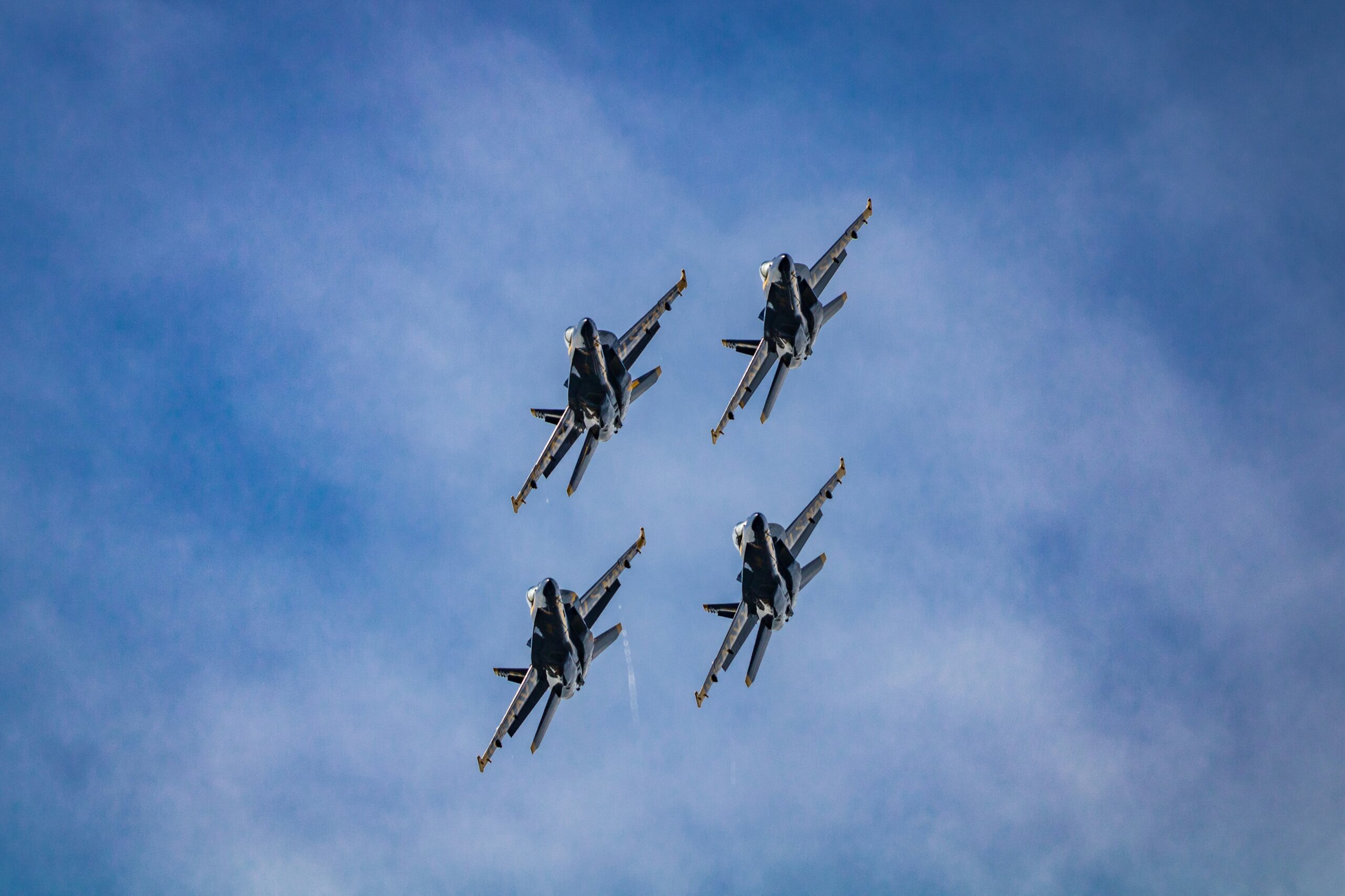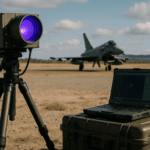Paris closed the gates of Le Bourget last night. Crowds went home with ringing ears and packed phones. When we look at the tally, two facts stand out. Airbus walked away with the bulk of commercial orders. The defense sector filled almost half of every hall. Those two forces shaped a show that felt different from any edition in recent memory.
The week carried a sober note. The loss of Air India Flight 171 six days ago froze Boeing’s public-relations machine. Executives stayed away. Employees wore small red-white pins in quiet tribute. According to industry sources, the company decided that sales ceremonies would look out of place. Visitors saw flowers in the Boeing chalet instead of model jets. That absence left plenty of space for others to claim the spotlight.
Airbus Orders Surge as Paris Air Show 2025 Tilts Commercial Balance
Airbus used the opening to press its advantage. Our analysis shows the European group booked firm deals worth about $21 billion in the final two days alone. Defense officials confirm no comparable surge on the U.S. side. The difference was visible in every newsroom graph that updated order boards during the show. Riyadh Air’s A350 purchase, one of the most high-profile deals at the event, exemplified Airbus’s dominant momentum.
- Riyadh Air: 25 A350-1000s with 25 further options
- LOT Polish Airlines: 40 A220s in a first-ever Airbus purchase
- VietJet: 100 A321neos to back regional expansion
- EgyptAir: 6 additional A350-900s, lifting its tally to 16
- AviLease (Saudi Arabia): 30 A321neos and 10 A350 F freighters
- Starlux: 10 A350-1000s for long-haul growth
- Embraer side note: SkyWest signed for 60 E175s, underscoring demand for regional lift
The breadth of that list matters more than single headlines. Airbus answered narrow-body, wide-body, and freight needs in one sweep. Airlines liked the early delivery slots that come with open production capacity on the A350 line. They also valued the lower maintenance burden that recent Rolls-Royce upgrades promise. Airbus advances MRTT+ production and naval drone development to expand its defense footprint. Boeing could not counter on-site, so momentum built day after day around the European camp.
Higher defense weight was no surprise to anyone who follows budget tables. European outlays climbed again in 2025. Conflicts in Gaza, the Red Sea, and Ukraine keep planners on edge. The show mirrored that reality. Organizers said 45 percent of floor space hosted defense and security programs. That figure slipped past Farnborough’s last ratio and set a modern record for Paris.
- F-35A daily flying display drew the biggest crowd reaction
- Rafale F5 upgrade path outlined by Dassault for the early 2030s
- Eurofighter managers talked about raising Typhoon output to meet “combat-mass” goals
- Airbus showed a full-scale Remote Carrier mock-up for the Future Combat Air System
- Parrot introduced the ANAFI UKR micro-UAV tailored for frontline units
- Leonardo rolled out its AW249 attack helicopter with new missile racks
- Textron closed a twelve-unit Bell 412EPX sale to the Tunisian Air Force
- U.S. and Israeli pavilions displayed interceptors, but French police limited live ordnance
Paris Air Show Orders Highlight Shifting Civil-Military Focus
Visitors noticed a surge in pilotless systems. Defense officials confirm that more than 120 drone types registered for static or aerial slots. “Wingman” concepts – remotely piloted escorts that flank crewed fighters – drew longest queues. Israeli and Australian engineers demoed swarming software. European teams pushed endurance hybrids that can loiter over maritime gaps. The mood showed how quickly combat aviation ideas now cross from labs to asphalt.
Fighter programs traded vision with pragmatism. Dassault insisted the Rafale line will bridge the gap to the Future Combat Air System, now slipping toward the mid-2040s. Airbus leaders agreed in public, yet spoke bluntly behind closed doors about work-share friction with French partners. Meanwhile, Eurofighter spokespeople stressed production agility. According to industry sources, Typhoon final-assembly could jump from eight to fourteen jets per year once fresh export letters convert into contracts.
Rotorcraft news carried a strong European accent. Italy’s Leonardo used Paris to give the AW249 its first air-show crowd. Engineers described a cockpit built around augmented-reality symbology and modular weapon rails. On the lighter end, Airbus Helicopters added a medical H145 deal with Norway’s air-ambulance service and presented updated mock-ups of its Racer compound high-speed testbed.
Transport aircraft kept a lower media profile but logged steady interest. An A400M flew tight banks twice a day. Airbus briefings highlighted autonomous refueling work and freight-bay linings ready for hydrogen fuel-cell pallets. Those incremental steps aim to stretch the platform’s relevance through the 2040s, when Europe may still lack a new heavy-lift design.
Sustainability threads ran through the civil aisles. Airbus and MTU signed a memorandum that pools cash for hydrogen fuel-cell powertrains on regional types. The partners target a ground-test rig in 2028. Suppliers displayed lighter composite ribs and high-ducted fans. The tone stayed practical. No one claimed net-zero by 2030; instead, engineers talked about single-digit fuel-burn savings that stack up across fleets.
Supply-chain health appears better than last year. Cabin manufacturers told us lead times on lithium batteries have shrunk to eight weeks, half the 2024 figure. Engine shops still face casting bottlenecks, but Pratt & Whitney and Rolls-Royce both reopened idled lines this spring. According to industry sources, that extra capacity helped Airbus promise firmer delivery windows, a key lever in landing the LOT and VietJet business. Airbus remains upbeat despite a potential delay with the AirAsia deal.
Passenger Growth and Fleet Plans Shape the Next Wave of Deals
Passenger demand paints the other side of the ledger. Global traffic now sits five percent above the 2019 peak. Low-cost carriers in Asia need seats to keep slots. Middle-Eastern start-ups chase tourism goals tied to national diversification plans. EgyptAir’s top management said the extra A350s will open non-stop U.S. routes from Cairo. China Eastern’s one-stop route via Auckland reflects similar long-haul ambitions. LOT will use the A220 fleet to push deeper into secondary European cities, a niche impossible with its aging Embraer E-Jets.
Money flows follow those plans. Export-credit agencies from France, Germany, and Canada held back-to-back briefings. They offered longer amortization profiles for green-label aircraft and for airframes built with at least forty percent recyclable content. Lessors liked the terms; Saudi Arabia’s AviLease added freighter options minutes after one session ended.
For small and medium suppliers, the lesson is clear. Backlogs extend beyond 2030. Firms that invest in digital twins and additive metal printing now will catch mid-decade ramp-ups. Labor remains a choke point. Eaton hydraulic systems for A380 highlight the long-term value of proven technologies. Several tier-one integrators ran recruitment booths beside the chalet rows. They highlighted apprentice slots that include AI-based quality-control training. The defense slice needs similar skills for radar-absorbing materials and high-cycle fatigue analytics.
The week also underscored risk management. Insurance delegates warned that conflict zones may widen. Hull rates already factor in longer polar diversions. Airlines that lock in fuel-efficient wide-bodies today gain hedge value. Defense ministries watch the same charts; they want aircraft that can self-deploy without tanker support, hence the attention on external fuel tanks and drag-reduction kits.
Practical implications for key groups look like this:
- Airlines: secure early delivery slots for wide-bodies if long-haul expansion is on the table
- Lessors: angle portfolios toward A321neo and A220 families, where liquidity stays highest
- Defense ministries: align acquisition calendars to secure production slots before civil rates rise
- Suppliers: prioritize additive manufacturing capacity and workforce retention incentives
- Investors: track hydrogen and hybrid propulsion ventures; first revenue milestones arrive in 2028
The show closed with a short ceremony instead of fireworks. Nothing felt flamboyant. Yet order books, security-equipment queues, and research projects all grew in one week. Boeing will try to reset at Farnborough next year, but the gap it must close widened in Paris. Meanwhile, Airbus and the defense community left Le Bourget with full diaries and clear road maps. The industry moves on to detailed design reviews, supplier visits, and budget hearings. Paris served its purpose: it set the agenda.
REFERENCE SOURCES
- https://www.dvidshub.net/image/9124207/airpower-display-paris-airshow-2025
- https://www.businessinsider.com/riyadh-air-massive-a350-order-major-win-for-airbus-2025-6
- https://simpleflying.com/600-aircraft-orders-summary-sombre-2025-paris-air-show/
- https://www.travelandtourworld.com/news/article/somber-skies-at-paris-air-show-2025-air-india-tragedy-casts-shadow-as-airbus-embraer-atr-shine-and-boeing-retreats-from-spotlight/
- https://www.reuters.com/business/aerospace-defense/airbus-upbeat-may-have-wait-airasia-deal-2025-06-18/
- https://www.ft.com/content/2ca34110-b268-4ef7-a00b-ce97a4df1d0e
- https://www.airbus.com/en/newsroom/press-release/2025-06-riyadh-air-places-firm-order-for-25-airbus-a350-1000-aircraft
- https://www.businessinsider.com/paris-air-show-defense-airbus-boeing-orders-airlines-middle-east-2025-6
- https://www.airbus.com/en/newsroom/press-release/2025-06-lot-polish-airlines-places-its-first-ever-airbus-order-for-40-a220s
- https://www.reuters.com/world/africa/egyptair-orders-six-additional-airbus-a350-aircraft-2025-06-18/
- https://www.airbus.com/en/newsroom/press-release/2025-06-egyptair-discloses-order-for-an-additional-6-airbus-a350-aircraft
- https://www.reuters.com/business/aerospace-defense/drone-makers-battle-air-dominance-with-wingman-aircraft-2025-06-19/
- https://www.defensenews.com/global/europe/2025/06/19/eurofighter-vendor-targets-combat-mass-over-next-gen-buzz/
- https://euro-sd.com/2025/06/major-news/45104/parrot-unveils-anafi-ukr-drone/
- https://www.aerosociety.com/news/paris-air-show-2025-day-two/
- https://www.airport-technology.com/news/airbus-hydrogen-fuel-cell-paris-airshow/
- https://www.cnbc.com/2025/06/19/airbus-orders-dominate-paris-air-show-as-boeing-takes-backseat-again.html


